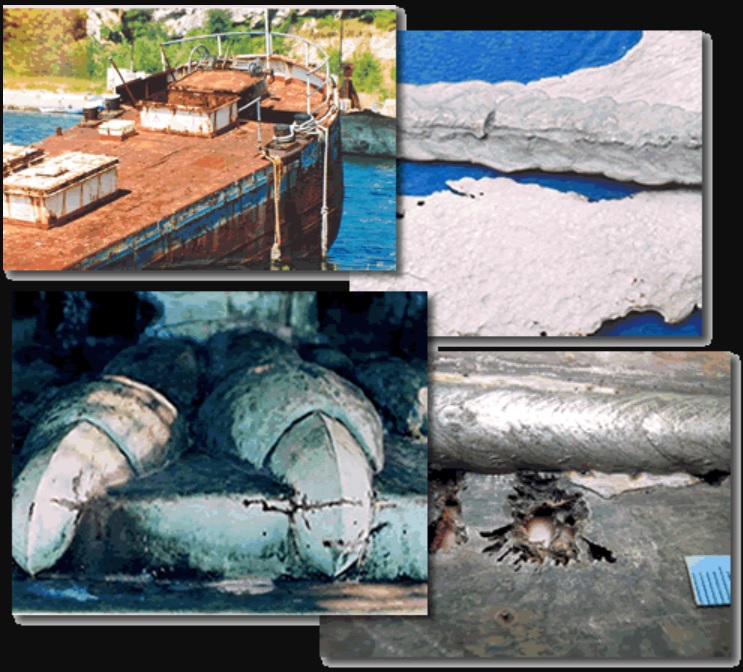Corrosion protection services and consulting

Short description
The Chair of Materials Protection, together with the Laboratory of Materials Protection, is a part The Department of Welded Structures at UNIZAG FSB.The research activities carried out in the Chair are targeted at the study of complex corrosion phenomena which have not been fully explained and understood yet, such as localized corrosion processes in stainless steels and the methods for reducing the danger of corrosion damage. The Chair has been mostly involved in this type of research for the past decade, especially for the water environments containing chloride.
The research conducted as part of research projects includes:
• Corrosion phenomena in welded structures and other structures made of high alloyed steels and the methods for their elimination.
• Corrosion and protection of the structures made of high alloyed steels.
• Localized corrosion phenomena in stainless steels and the methods for their elimination.
• Corrosion protection by protective coatings.
• Corrosion inhibitors.
The research activities carried out in the Chair are targeted at the study of complex corrosion phenomena which have not been fully explained and understood yet, such as localized corrosion processes in stainless steels and the methods for reducing the danger of corrosion damage. The Chair has been mostly involved in this type of research for the past decade, especially for the water environments containing chloride.
The research conducted as part of research projects includes:
• Corrosion phenomena in welded structures and other structures made of high alloyed steels and the methods for their elimination.
• Corrosion and protection of the structures made of high alloyed steels.
• Localized corrosion phenomena in stainless steels and the methods for their elimination.
• Corrosion protection by protective coatings.
• Corrosion inhibitors.
Contact person: Ivan Stojanović, PhD, ivan.stojanovic@fsb.hr
Long description
The Laboratory has been significantly upgraded through the acquisition of new testing equipment, such as a chamber for testing in salt atmosphere, a humidity chamber, a UV chamber, a device for alternating submerging and stations for electrochemical corrosion testing. This equipment allows for a wide range of corrosion testing and enhances the characterization of corrosion processes.- Potentiostat/Galvanostat VersaSTAT 3 – modern electrochemical techniques used in corrosion applications include Linear Polarization Resistance (LPR), Electrochemical Impedance Spectroscopy (EIS), and EIS at various polarization levels. Research of corrosion processes on metal-electrolyte interface and determination of the kinetics of electron transfer between the metal and the electrolyte anions.
- Potentiostat/Galvanostat Model 273A - various electrochemical corrosion measurement techniques such as potentiodynamic polarization, Tafel plots, polarization resistance, cyclic polarization, potentiostatic, galvanostatic, and galvanic corrosion studies, and open circuit vs. time measurements.
- Stereomicroscope Leica MZ6 – surface analysis, material characterization
- Corrosion testing in artificial atmospheres - Testing of structural materials and protection coatings in salt fog and humidity chamber
- Erichsen UV Test Chamber Solarbox 1500e – UV testing resistance
- Device for alternating submerging – simulation of alternate wet-dry condition such as splash zone
- Testing equipment for protective coating properties - thickness measurements, cross-cut adhesion, pull-off adhesion, impact, gloss, hardness and other properties of all types of protective coatings
- Testing of corrosion resistance of structural materials
o Testing of resistance to pitting corrosion
o Testing of resistance to intergranular corrosion
o Testing of resistance to stress corrosion
o Testing of resistance to crevice corrosion
- Passi Test Plus - testing of surface passivation on stainless steels, measures the open-circuit potential and the nobility of a metal (and consequently its resistance to corrosion).
- Olympus X-ray Fluorescence (XRF) analyser - provide qualitative and quantitative material characterization for detection, identification, analysis, quality control, process control, regulatory compliance, and screening, for metals and alloys, mining and geology, scrap and recycling, environmental and consumer safety, education and research, and general manufacturing.
- Cathodic disbondment testing equipment - assessing the resistance to disbondment of damage to the coatings when exposed to cathodic polarisation.
- Electrochemical testing equipment for galvanic anode materials quality control – galvanic anodes for cathodic protection.
Member:
University of Zagreb, Faculty of Mechanical Engineering and Naval ArchitectureIvana Lučića 5
Zagreb
Croatia
Interests
- Materials
- Engineering and design
- Management, Services